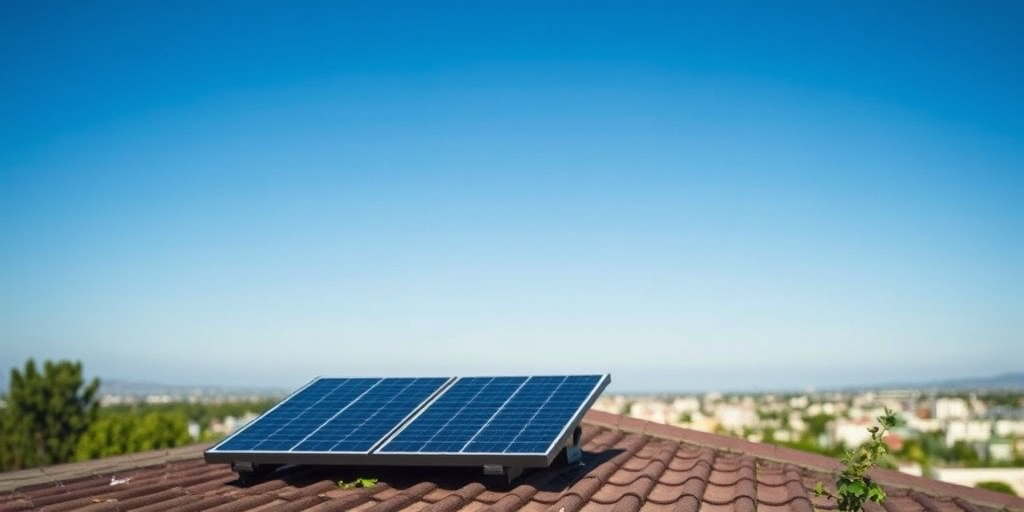Have you ever wondered if sunlight could power our laptops? As energy demands soar and environmental concerns intensify, solar panel integration in laptops offers a breakthrough in eco-friendly portable computing. Drawing inspiration from innovative models like the “Luna” blueprint, we explore designs that promote material reuse, modularity, and enhanced energy efficiency. We believe that embedding renewable energy directly into our devices challenges conventional power solutions while paving the way for sustainable tech, promising a cleaner, more efficient future for both users and our planet.
Technological Feasibility and Design Challenges for Solar-Powered Laptops
The integration of onboard photovoltaic charging into laptop systems introduces a host of engineering challenges. We face design complexities when embedding photovoltaic cells directly into the chassis, drawing on innovative clean energy modules like Back Contact Cell and Dynamic Solar Tracking. A major hurdle lies in optimizing portable system energy conversion. In prototype models, converting sunlight into usable energy while maintaining device performance has necessitated rethinking conventional circuit designs.
Roadmap milestones from March 2023 through May 2025 indicate gradual implementation, yet current prototypes reveal persistent engineering challenges. Integrated renewable circuitry must overcome not only inherent design constraints but also consumer acceptance issues. Our analysis demonstrates that achieving an efficient balance between energy supplied by the solar arrays and the device’s operational demands requires addressing several technical obstacles.
We have identified key design challenges that need to be resolved to advance onboard photovoltaic charging in laptops:
- Integration complexity
- Energy conversion limitations
- Thermal management issues
- Cost versus efficiency trade-offs
These challenges highlight the need for a coordinated approach combining material science innovations with refined system integration techniques. As we push towards portable system energy optimization, addressing each hurdle will be crucial in developing laptops that provide innovative clean energy modules without compromising performance. Our ongoing efforts focus on maintaining a delicate balance between advancing renewable technology integration and ensuring robust operational performance in varied usage scenarios.
Future Outlook and Market Trends in Solar-Powered Laptop Technology

When asked, “What are the future milestones for solar-powered laptops?” the immediate answer is a series of planned innovation timelines ranging from early 2023 to mid-2025. We see competing brands presenting next-generation renewable gadgets with futuristic sun-powered tech that leverages advanced renewable integration strategies. These planned rollouts focus on integrating self-sustaining computing methods that gradually embed renewable micro cell architectures into portable devices. Our answer, directly from competitor timelines and market projections, emphasizes the industry’s commitment to transitioning towards off-grid digital innovation and sustainable power solutions.
Delving deeper, we observe that advancements in materials science and energy management are paving the way for revolutionary laptop designs. Breakthroughs in renewable micro cell architecture indicate a transformative impact on computing efficiency and energy utilization. With rising consumer interest in smart, off-grid technology and green tech strategic investments, manufacturers are leveraging these trends to reduce production costs while scaling innovative renewable strategies. These market trends underscore a pivotal shift towards eco dynamic computational design that caters to both enterprise and individual consumers seeking reliable, energy-efficient solutions.
- Enhanced self-charging capabilities
- Integration with IoT and smart energy grids
- Continued reduction in production costs
- Expanded adoption in both consumer and enterprise segments
This forecast, together with a surge in strategic investments and evolving consumer interests, reinforces that the future of solar-powered laptops is set to be transformative. The industry’s focus on evolving functionalities and sustainable integrations promises a new era where renewable energy is at the core of portable digital technology.
Final Words
In the action, we’ve dissected solar-charging laptop innovations, covering sustainable design, technical integration challenges, and environmental performance metrics.
We examined circular design benefits, renewable energy harvesting, and emerging market trends with detailed performance benchmarks and design considerations.
Our exploration underscores The Integration of Solar Panels in Laptops: A Sustainable Future as a promising pathway toward energy-efficient, environmentally conscious computing.
We remain optimistic about the evolving landscape of eco-friendly portable computing and its potential to redefine the future of digital technology.
FAQ
Q: What are the main benefits of solar panels in laptops?
A: Solar panels in laptops offer reduced electricity costs, lower carbon footprints, and enhanced energy independence. The integration enables sustainable computing while maintaining operational efficiency through renewable power generation.
Q: How do solar-powered laptops handle energy conversion?
A: Solar-powered laptops utilize photovoltaic cells integrated into the chassis to convert sunlight into usable power. The system optimizes energy harvesting through Back Contact Cell technology and Dynamic Solar Tracking.
Q: What are the key design challenges for solar laptop integration?
A: The primary challenges include complex chassis integration, maximizing energy conversion efficiency, managing thermal output, and balancing cost-effectiveness with performance requirements in the limited space available.
Q: When will solar-powered laptops become widely available?
A: Development timelines indicate gradual implementation between 2023 and 2025, with major manufacturers like Lenovo leading innovation through prototypes such as the Solar-Powered Yoga PC.
Q: How much environmental impact do solar-powered laptops have?
A: Solar-powered laptops significantly reduce CO2 emissions and utilize sustainable materials in manufacturing. Current implementations have integrated 155 million kilograms of eco-friendly materials into production.
Q: What future developments are expected in solar laptop technology?
A: Future advancements include improved self-charging capabilities, smart grid integration, reduced production costs, and enhanced energy management systems through renewable micro cell architecture.



